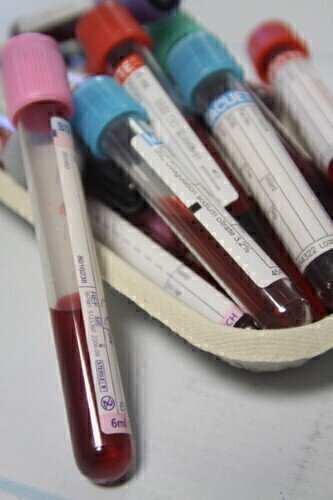News & Views
Wheat’s Roots and Leaves…a New Key to Food Security
Feb 20 2012
High powered X-ray Micro-Computed Tomography scanners are being used at the University of Nottingham to see inside the leaves and roots of plants and surrounding soil to study how plants can best absorb water and nutrients and also how photosynthesis might be improved.
With funding of £1.63 million from the Biotechnology and Biological Sciences Research Council (BBSRC), the scanners are being used in a joint £890,000 project with Sheffield University to investigate how photosynthesis in food crops like wheat and rice could be improved by breeding plants with optimum leaf structure.
Leading the team at Nottingham, Dr Sacha Mooney said: “There are some really crucial questions that we are trying to answer. What can we do to a plant to enable it to yield better and survive in harsher conditions?
And what can we do to the soil to make it better for the plant? Our new technology is a game-changer in that for the first time we can look inside a leaf or a root within the soil and see the living plant in action at a cellular level.”
Professor of Plant Science at the University of Sheffield Andrew Fleming said: “The concentration of carbon dioxide is changing so that plant leaves may no longer have an optimal structure for photosynthesis.
We will create new leaves and test their efficiency of photosynthesis to see if we can identify an optimal future leaf design. The eventual aim is to use our knowledge to aid worldwide efforts to improve crops, in particular rice, the staple food for much of humanity.”
The scientists will produce high-resolution 3D images of the leaves of the genetically-mapped model plant Arabidopsis. The scanner can produce images with a pixel resolution of up to ½ micron or 500 nanometres allowing the researchers to measure and observe photosynthesis in action, even in ‘4D’ over a period of time.
The work will inform sophisticated breeding techniques to generate a variety of plants with different leaf structures with eventual aims to develop ‘supercrops’ which can thrive in poorer soils and withstand drought and other extreme weather conditions.
A second £740,000 BBSRC grant is being used in collaboration with scientists at the University of Southamptonto scan soil samples and use mathematical modeling to accurately predict how much water roots take up from different soils. The research will also be used to evaluate and compare the performances of different types of root patterns in wheat, a major UK crop.
The scientists will also be working with colleagues at the International Rice Research Institute in the Philippines to see if the data from the laboratory plant can be used to help current research into improving rice varieties.
Digital Edition
Lab Asia 31.2 April 2024
April 2024
In This Edition Chromatography Articles - Approaches to troubleshooting an SPE method for the analysis of oligonucleotides (pt i) - High-precision liquid flow processes demand full fluidic c...
View all digital editions
Events
InformEx Zone at CPhl North America
May 07 2024 Pennsylvania, PA, USA
May 14 2024 Oklahoma City, OK, USA
May 15 2024 Birmingham, UK
May 21 2024 Lagos, Nigeria
May 22 2024 Basel, Switzerland







.jpg)










